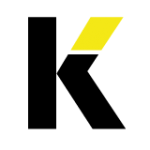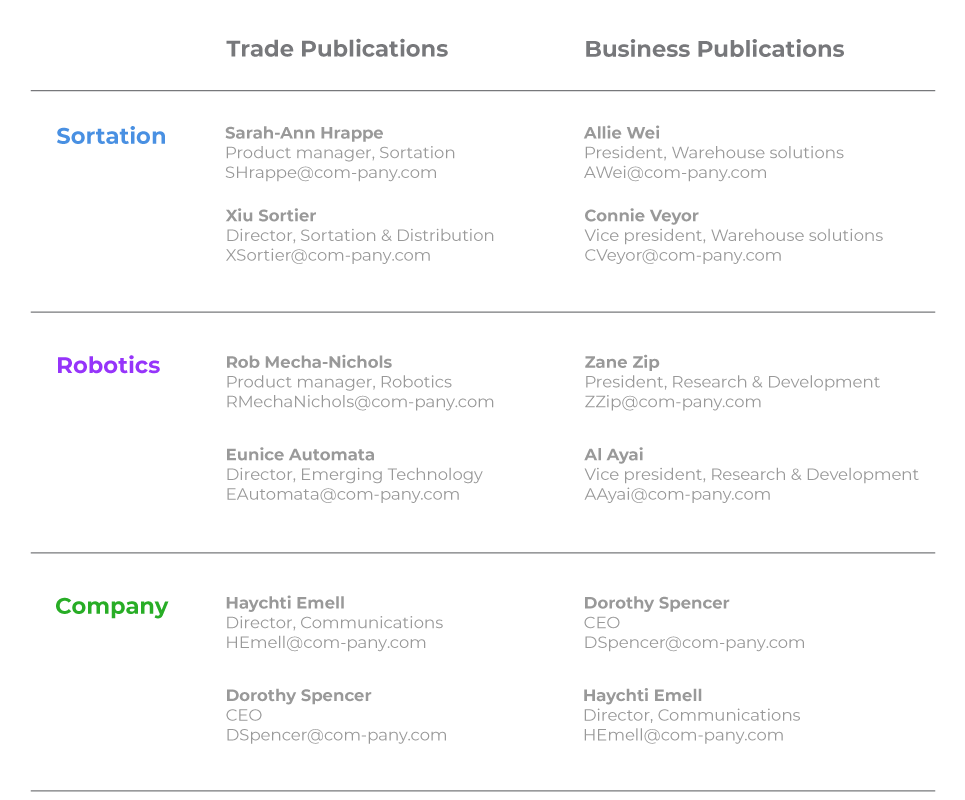
HELLO
We’d love to hear
from you!
from you!
236 S. Boylan Ave
Suite 100
Raleigh, NC 27603
919 438 2423
letschat@koroberi.com

HELLO
236 S. Boylan Ave
Suite 100
Raleigh, NC 27603
919 438 2423
letschat@koroberi.com
Resources > How to give an engaging B2B editorial interview
Imagine you’re preparing to speak with editors at your biggest trade show of the year, or maybe you just got a request to interview with a reporter for a feature story. It’s perfectly normal to feel a little nervous in these situations, especially if you’ve never spoken with the media before.
Let’s put those nerves to rest.
This resource guide provides strategies for getting the most out of your B2B editorial interview experience, including how to prepare, techniques for responding to questions, along with what to do – and what not to do – during and after an interview.
Media requests oftentimes emerge on short notice as writers cope with fast-approaching deadlines. So, it’s important that priorities, expectations and processes are clearly established within your organization. In fact, brands that can respond quickly and thoroughly tend to benefit from more frequent requests for interviews or comments, leading to even more coverage.
Brands can create a foundation for efficient media response by:
For any media opportunity that comes your way, you should ask yourself, ”Does participating support my brand’s goals?” This helps ensure your share of voice is associated with the right topics and your public relations (PR) investment is justified. For example, if you want to position your company as a leader in producing equipment for automotive manufacturing, you may not want to be a source in a piece about e-commerce warehousing – even if you could, doesn’t mean you should.
This helps to streamline the decision-making process of who to use as a company spokesperson for each interview opportunity. Make a matrix document with common topics and types of media outlets and fill in the qualified SMEs for each. We recommend listing both a primary and back-up SME to help your brand respond even if your primary SME isn’t available.

Educate your spokespeople on what to expect and how to work with the media before they give any interviews. The better the interview, the better your brand’s relationships with important publications. The better those relationships, the more likely you are to be at the front of the line for coverage opportunities in the future.
A strong brand message is one that is woven into every marketing tactic – and PR is no exception. Regardless of the interview topic, media outlet and interviewee, it’s important to be consistent in communicating your brand’s positioning and key messages to maximize your impact.
You know your stuff, but even practiced interviewees can have trouble communicating technical subject matter without stumbling into long answers and muddled messaging. That’s where a little interview preparation can go a long way.
Taking some time before the interview can help you figure out what to focus on, how to organize your thoughts and the best way to communicate complex topics. If you have a PR agency, they can also help you feel more prepared, whether that’s by brainstorming angles, helping you practice or providing some briefing materials and messaging.
Some things that you can brush up on ahead of time include:
As an interview subject, you should know the name of the media outlet, its audience and the topics it covers. Clicking around the outlet’s website can help you get a feel for their recent coverage, tone, readers’ interests and how interview content is used in final articles.
Knowing a little more than just their name can help facilitate casual chatter, build rapport and give you a better sense for the level of explanation that they might need about the topics you are discussing. Gather some basic bio info, like whether they’ve been working in the industry for long and what topics they typically cover.
Understanding what exactly the reporter is trying to learn more about, and maybe what they’re not looking to cover in a particular conversation, will help you to provide the most valuable input. Ask for interview questions in advance so you have time to formulate comprehensive responses that clearly connect with your company’s story.
Get clarity on how the interview will be held – over the phone, via video conference or in-person. Also confirm what the output will be – whether that includes paraphrasing and direct quotes in an article, or if the interview itself will be published as a video or a podcast. This will inform any extra preparation, like if you need to download an app, use a headset or plan for attire.

If there’s a hard stop or only a few minutes to chat, you’ll know to keep answers short and to the point.
You have key messages in mind, you’ve prepared for all possible scenarios, so you’re almost ready to go. Here are some important things to remember so you can nail the interview.
Don’t force key points into the interview if they don’t come up naturally as part of the conversation. Let things unfold organically - you can always bring up important points at the end or bridge to them as the opportunity arises. Remember that the interview is a conversation, and that the reporter may take it in a slightly different direction as the dialogue flows.
Writers are not looking for an interaction that feels like a product infomercial or advertisement. They’re looking to equip readers with industry insights that help them to do their jobs better. If they get responses that are too self-promotional and salesy, the writer is unlikely to come calling again.
Claims like “we’re the best/fastest/most effective” lack substance if you don’t have specific evidence to back up your assertion. Instead, explain why your solution or service is so great and let the editor come to their own conclusion. Referencing a feature or benefit that you can substantiate with an explanation is a great practice.
You are the SME. The writer, editor and audience will all have different levels of understanding of the subject matter, so you’ll likely end up doing some teaching. Providing clear, simple explanations and practical examples ensures a common foundation, and could also lead the writer back to your company if they need technical explanations in the future.
Bridging allows you to transition from a difficult question back to the talking points you prepared. For example, if a reporter asks you about a controversial topic, you can acknowledge the question and then pivot by using phrases like “Before we get off the subject…” or “I wouldn’t say that, but I would say…”
Flagging sends up a verbal flare to the reporter that you’re about to say something important that could be used as a quote or a soundbite. You can flag talking points by using phrases like “The main point is…” or “The most important thing to remember is…”
At the end of your interview, you can quickly summarize your key points for the reporter. This helps hammer home important messages and sends the reporter one final signal about what to include as your contribution.
It’s best to only share information that you are confident can be published publicly. If a reporter asks you to share information that can’t be publicly disclosed or published, politely clarify that you aren’t able to speak to that and direct the conversation back towards topics you can address.
The interviewer will be more engaged if the conversation is a two-way street. Asking questions gives you an opportunity to talk about the future and give the publication a better understanding of where your company’s input can fit into their coverage.
Quite simply, don’t exaggerate, make anything up or say something about your brand or products that will get you in trouble with your bosses. If everything you say is true and supports the customer-facing story you want to tell, you’ll be okay.
A defensive tone can quickly turn an interview from a friendly affair to a combative one, which could ultimately complicate your relationship with the outlet and your future coverage.
It reflects poorly on your own brand and opens the door for competitors to take center stage in the bigger story.
Generally, your PR team or agency will coordinate with you to handle any follow-up that the writer requires, such as providing clarification on additional questions they run into, or providing images/video to accompany the finished piece.
Your PR representative will also communicate with you if the writer provides the opportunity to fact-check your quotes in the story before it publishes, but know that not all reporters or publications will allow this. If there is an opportunity to review, this is not meant to give you the chance to re-imagine your quotes, but to ensure accuracy, especially when it comes to technical information that may be included.
Once you receive the draft or the article publishes, review it carefully. If there are any inaccuracies, it’s important to let the writer know as soon as possible so they can make the needed corrections. And if all looks good, share the published story with the world! Hopefully your phone will ring again soon with an interview request. And when it does, you’ll be ready.
I’ve been a writer and editor for industry-specific publications for more than 30 years. During that time I’ve communicated with hundreds of PR reps from agencies of all sizes. There is a very small (count them on one hand!) number of PR agencies and representatives whom I have found to always be highly professional, responsive, knowledgeable about what the trade press needs, and fully versed in their clients’ products, industries, and markets. Koroberi is among them.
TOBY GOOLEY
Contributing editor, DC Velocity
I’ve been a writer and editor for industry-specific publications for more than 30 years. During that time I’ve communicated with hundreds of PR reps from agencies of all sizes. There is a very small (count them on one hand!) number of PR agencies and representatives whom I have found to always be highly professional, responsive, knowledgeable about what the trade press needs, and fully versed in their clients’ products, industries, and markets. Koroberi is among them.
TOBY GOOLEY
Contributing editor, DC Velocity
